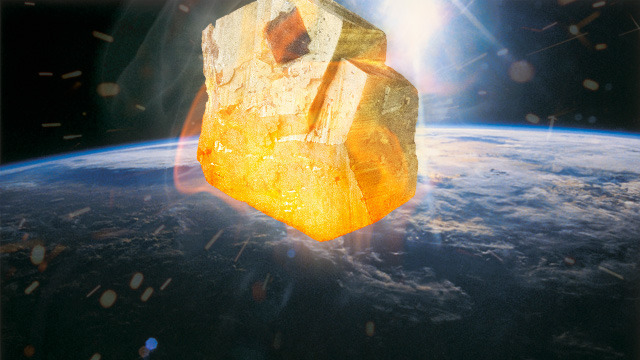
The collision with a Mars-sized body that created the Moon left the Earth in a molten state, one that allowed the denser elements, like iron, to sink to the core. The iron should have taken a class of iron-loving elements, including most precious metals, along for the ride. Instead, there are appreciable amounts of these elements in the crust, a fact that has been attributed to the terminal bombardment, which ended about 3.8 billion years ago, based on the scars it left on the Moon. Now, researchers have developed some extremely precise measurements that support this version of events.
The work relies on a tungsten isotope, 182W, that's the product of the decay of a "short-lived" isotope of Hafnium (only a geologist would call 8.9 million years short-lived). Because of this decay, the Earth's crust has an elevated ratio of 182W to 184W, since the parent hafnium partitioned with the silicate rocks there. If we define that ratio as 1 for current rocks, then the meteorites that struck during the terminal bombardment have a lower ratio. This should make the isotope ratios a sensitive test of the source of various rocks, one that the authors of a new paper have deployed on some of the oldest rocks on the planet, originating in Greenland.
This wasn't an easy thing to do. The ratio is traditionally measured in units of parts-per-10,000, and the difference between samples was only a fraction of a single unit. But the authors got it down to an error of only ±0.05, and then used two different tungsten purification methods to make sure they gave consistent results. And the results were very consistent: all the Greenland samples, which are composites of rocks formed before the terminal bombardment, showed a higher ratio of the radioactive isotope than any of the younger samples. The difference was in keeping with estimates of how the terminal bombardment would have added material to the crust.
The authors consider a couple of other possibilities that would have produced the isotopic differences, but don't see evidence that any of them were in play. So, they conclude that the terminal bombardment model is the best fit for their data. But the paper doesn't end there, noting that, to get the modern ratio in some of their samples, plate tectonics must have started mixing the crust very quickly; the same is true for another isotope of neodymium that they also tested. So, they engage in what they admit is "speculation," and suggest that the late heavy bombardment may have set off the convection that drives plate tectonics.
Nature, 2011. DOI: 10.1038/nature10399 (About DOIs).
Listing image by Photo illustration by Aurich Lawson
reader comments
19